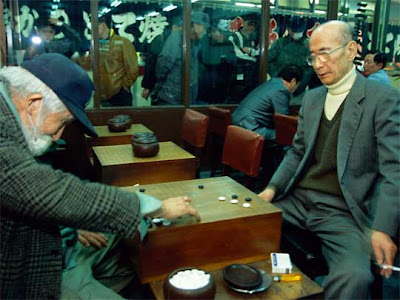
Traffic in and out of Shinjuku, one of Tokyo's huge shopping districts
An adrenaline-pumping bullet-train ride to a place of deep calm.
The sheer level of energy is the most striking aspect of Japan's capital city. Tokyo is a place where the urgent rhythms of consumer culture collide with the quieter moments that linger from older traditions. It's hectic madness leavened by the most Zenic of calms.

Lovely big pieces of raw fish: salmon sushi in Tokyo restaurant

Sumo wrestlers and gyoji (referee) at Ryogoku Kokugikan Sumo Arena

Teenagers and big teenagers, shopping in Harajuku

Japanese drummers thrashing about in Tokyo

Neon Canyon: Yasukuni-dori (Yasukuni street), Shinjuku

One big electricity bill, Shinjuku district

Great Buddha of Kamakura: built 1252, almost washed away by tidal wave, 1495

What the future will be like: sleeping accommodation in capsule hotel, Shinjuku

Vending machine capital of the world














































